On January 27th, 2024, one year ago today, I had received my Sony WM-55 Walkman in the mail. It was the spark of my interest in vintage audio, which has become my main hobby. It started mainly as a few Bandcamp labels I followed released tapes, and I wanted to get a player for them, and not anything cheap or ugly looking. It also would allow me to explore more genres, like ska, rock, and older pop songs, which was a nice bonus.
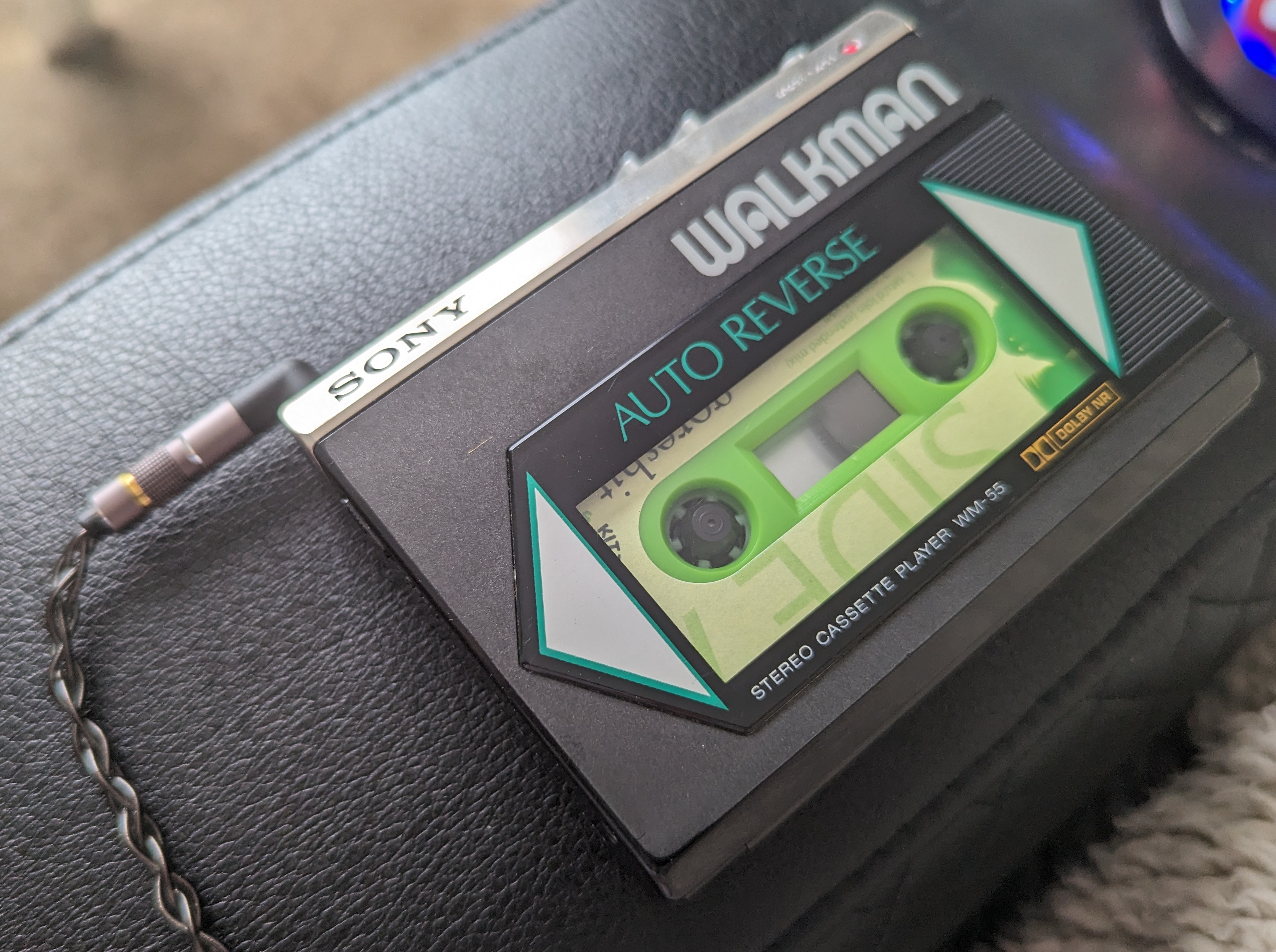
But the Walkman was only the beginning. I wanted some actual headphones since my IEMs were a little too sensitive, so I bought some modern "vintage" headphones, the Koss Porta Pros which released in 1984 and are still made today. They sound pretty decent for $40 headphones. But since the Walkman didn't work properly and I also wanted to be able to record to tape, I soon got a Nakamichi CR-1A cassette deck. I managed to get it for just $36 due to it not being in the best cosmetic shape, and it has been working flawlessly and soundig amazing since I got it, without a repair needed. It was without a doubt, the best barigain I have ever gotten for a piece of audio gear, as they typically retail for $150-$250 depending on functionality.
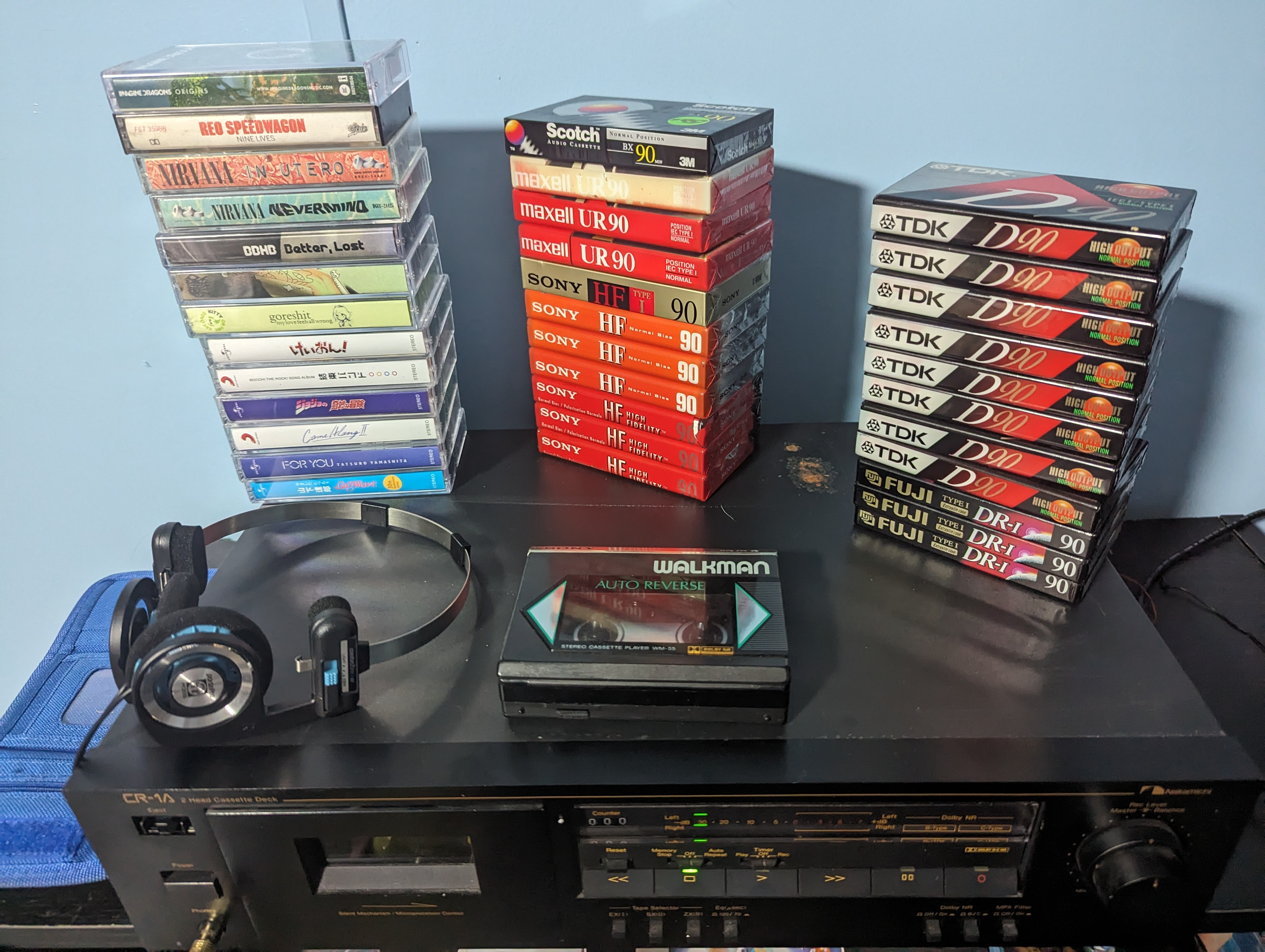
After I got the CR-1A, I was confident knowing there wouldn't be much loss if I went and repaired the Walkman, so I made my first attempt and had to buy a solderig iron to make repairs, which kicked off many new projects in and of itself. I couldn't fix everything then and ther, so it still needs repairs to this day, but I do have all of the parts I need for when I feel like doing it.
But, of course, having one 17 inch stereo component meant I could easily just stack another on top without really sacrificing any additional space. So, since I found cassette changers interesting, I got a Mitsubishi DA-L70. Then I got a Sony VCR combo unit, pretty much just for watching anime on. But with those, my Wii, and my PS2, I bought an Integra DHC 40.1 AV pre-receiver from 2009, which originally cost a cool $1200. It had sound quality over the headphone jack far beyond what I had heard up until that point. I then dubbed my system "The Stack".
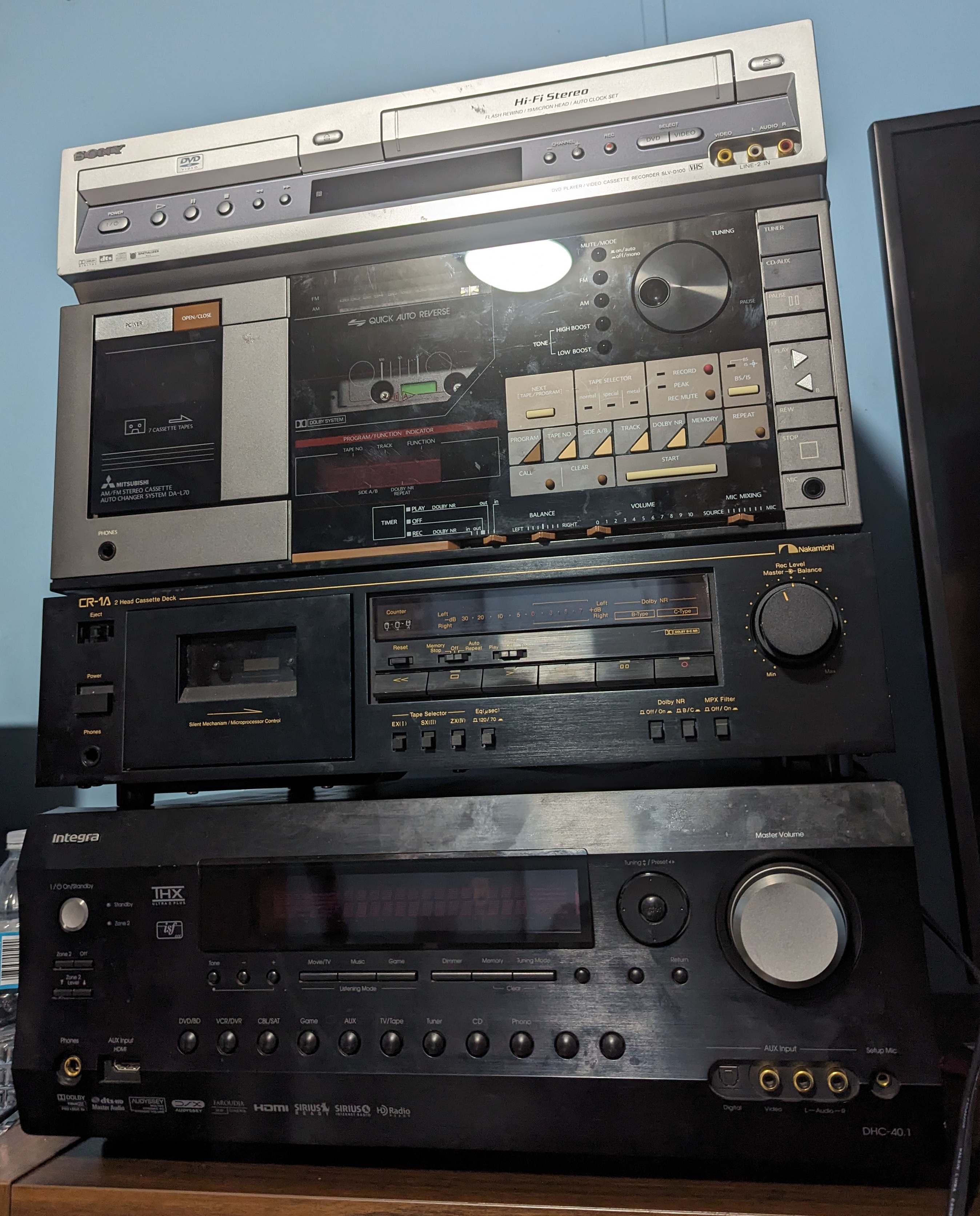
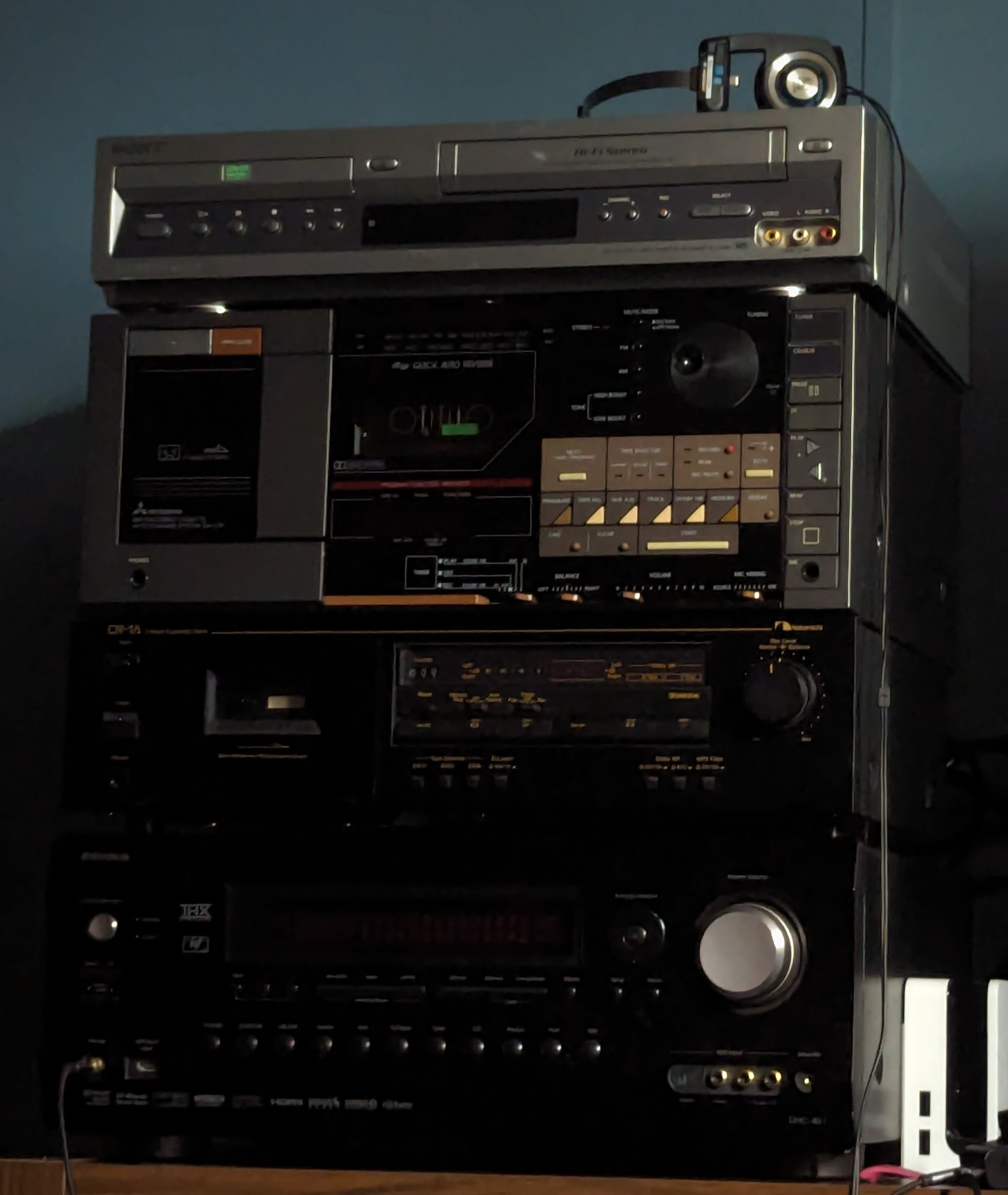
Though, it wasn't in that form for long. I had gone thrifting for some speakers and came back with a Sony DVD changer/SACD player, which was pretty nice even though it required an HDMI connection. I also was given a 17 inch wide Blu-ray player from my step-step-grandfather to add to my system. Then it was time for my cousin's 18th birthday, and we were planning to watch a movie outside over my portable projector (a 2007 Emerson), but I wanted some speakers for that, as well as for my system, so me and my grandpa went to look for a set at Goodwill, but alas came up empty handed. Or, we would've, but he had two subwoofers, some 1966 Xam 3D speakers, and a Scott Stereomaste 342 to give me. We couldn't actually use them though, as the Scott was dead and my only other amp was the DA-L70 until shortly after when my Yamaha RX-500 and Teac EQA-10 came in to synergize with my Nakamichi to start adding to my mid-to-late '80s focus. This marked the first full rearrangement, but the speakers were way too close for good stereo separation. Then, shortly after, I got my JVC HR-D530U from 1987 to add to my stack.
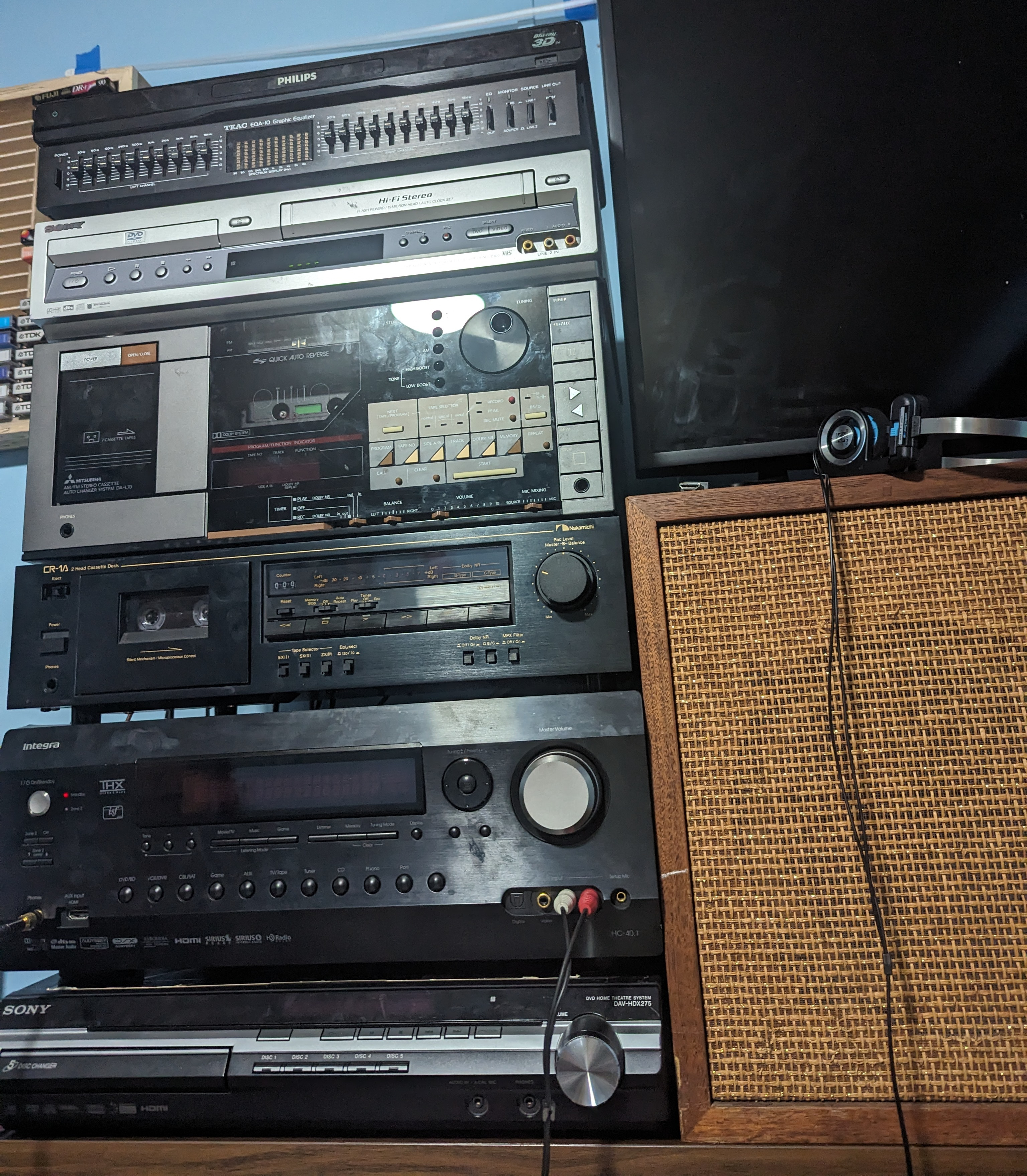
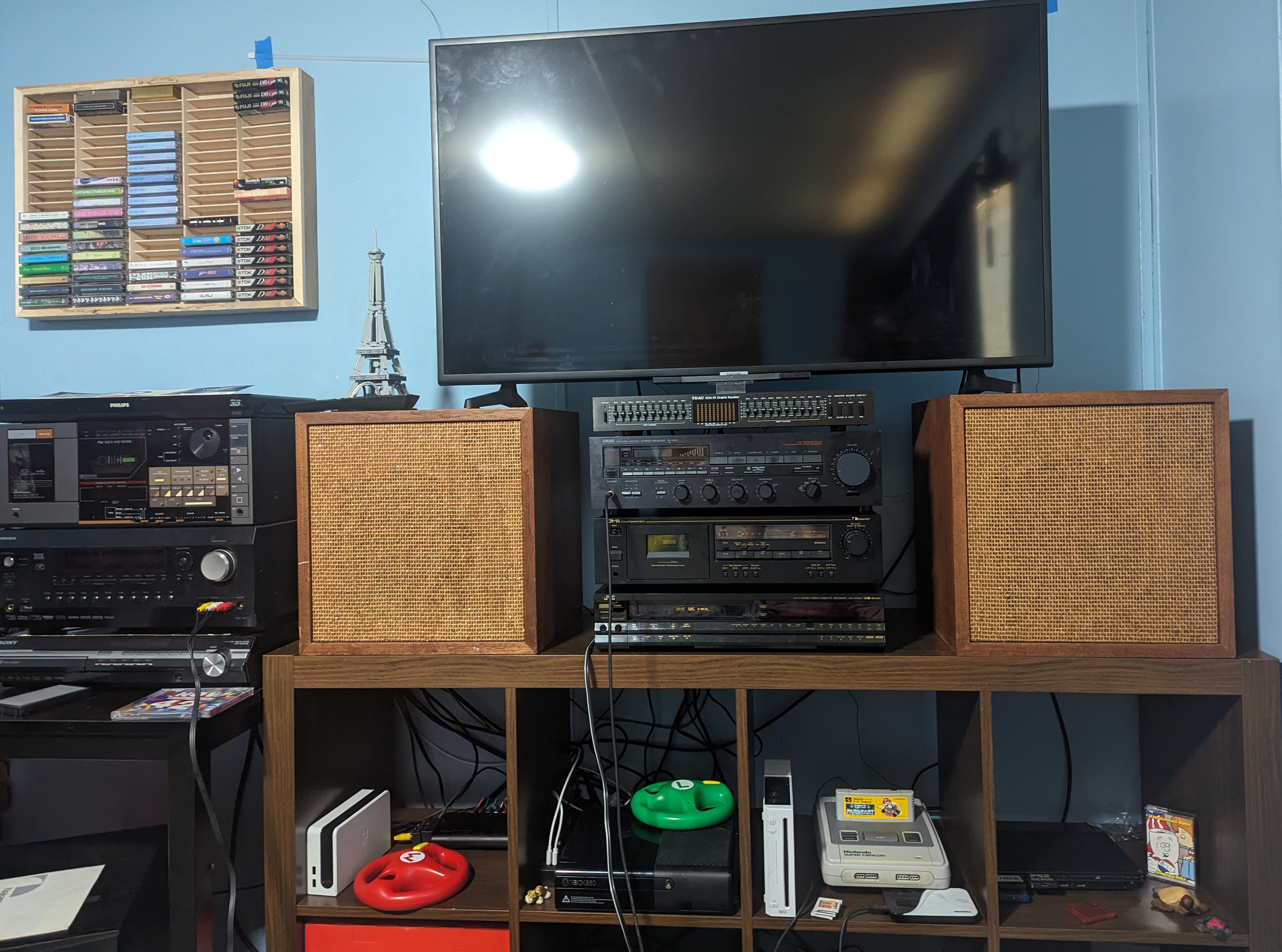
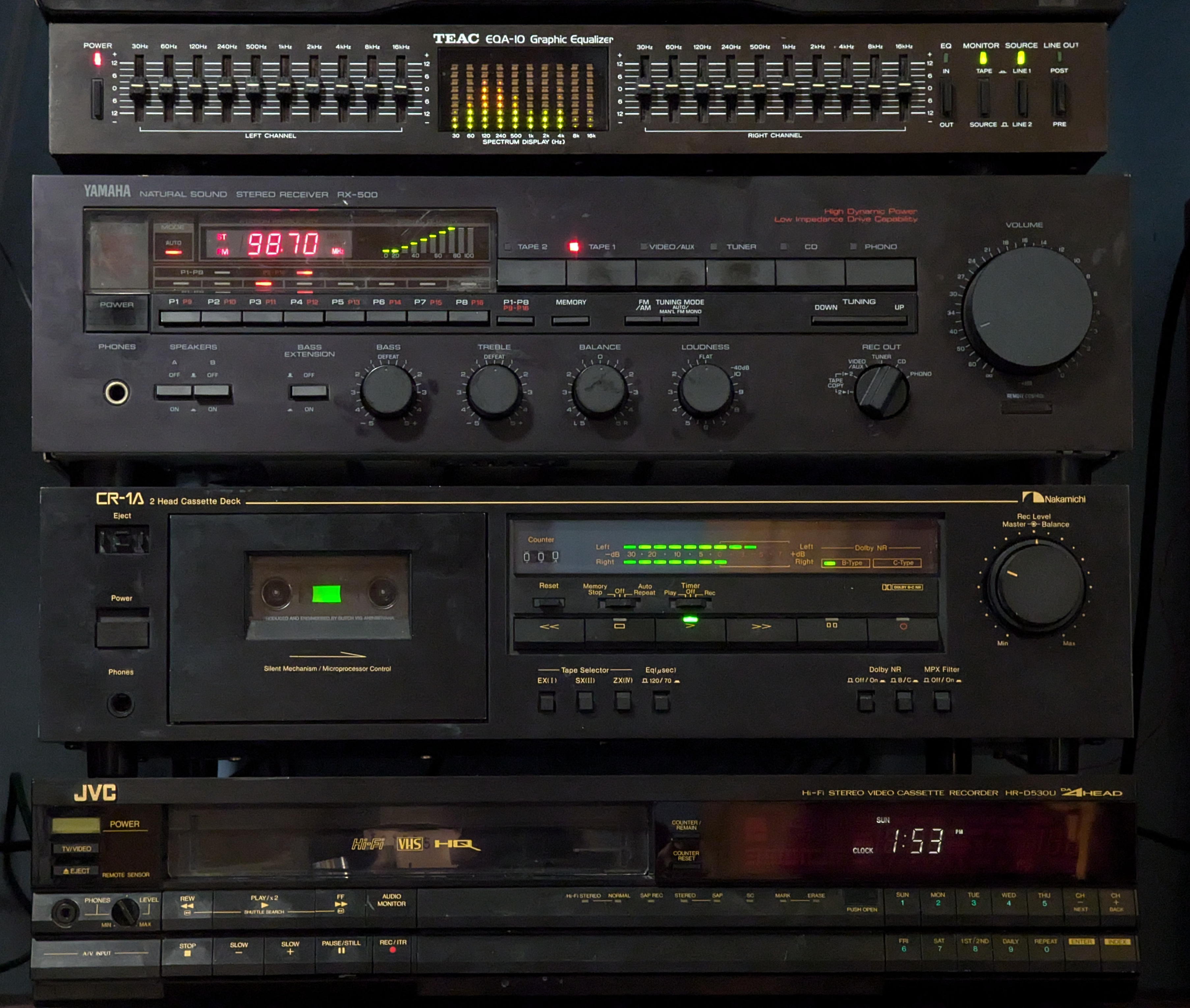
This was also around the time my little cousin mentioned having a CRT, which turned out to be a 27" Philips CRT that was under a tree for a year, which I restored as a analog video and gaming display. And we also both got AV receivers at this time; I got a Yamaha RX-V659 to replace my then-faling Integra pre-receiver and he got an Onkyo for the Yamaha surround speakers he had set up in his family's camper

After the first major rearrangement, my system was starting to look good, so I posted it to Reddit and asked for a turntable recommendation that would be decent, yet be fairly budget and match the rest of my system. This is what made me get my Technics SL-BD22, and was what made my system split into 3 stacks, in a wall to wall setup. This had the opposite speaker setup problem (they were so far apart, they had to be in the corners, which affects the bass acoustics among other things).

Then Christmas starts to roll around and by this point I knew 4 things:
So, I put the Magnavox CDB-492 on my Christmas list, along with some Grado SR-325 headphones, and looked for potential options to solve my speaker problem, but came up empty handed. So I made a decision to try something odd, and test out the thing that woud be my favorite part of my system. But before that, it was time to rearrange my setup and have a proper place to put it; in my parents' old entertainment center cabinet.
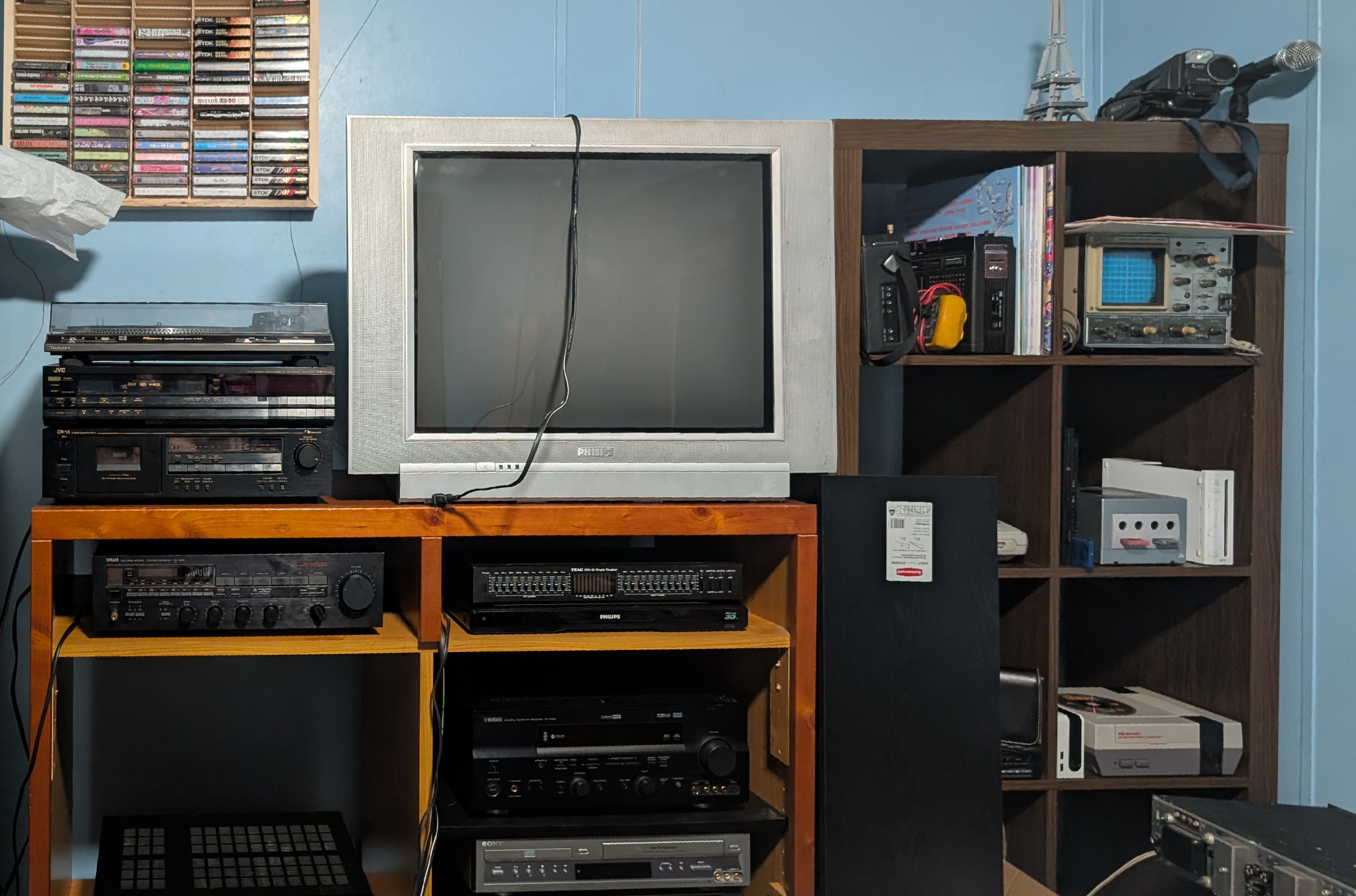
And what did I decide to buy that was so odd? A pair of Stax SR-40 electret earspeaker and the accompanying SRD-4 energizer. What does that mouthful mean? Well, Stax is the company that invented electrostatic "headphones", which they dubbed earspeakers, as they need an external box called an energizer that literally plugs into an amplifier's speaker terminals. These aren't typical headphones you can just take with you wherever. They're odd as they use static electricity to vibrate a micron-thin membrane, which takes special power requirements and is supposed to provide more clarity and accuracy than a typical dynamic driver like you'd find in most headphones and speakers. And it sure does work, as despite being $70 headphones from 1975, they actually sound slightly better than my $295 Grados.
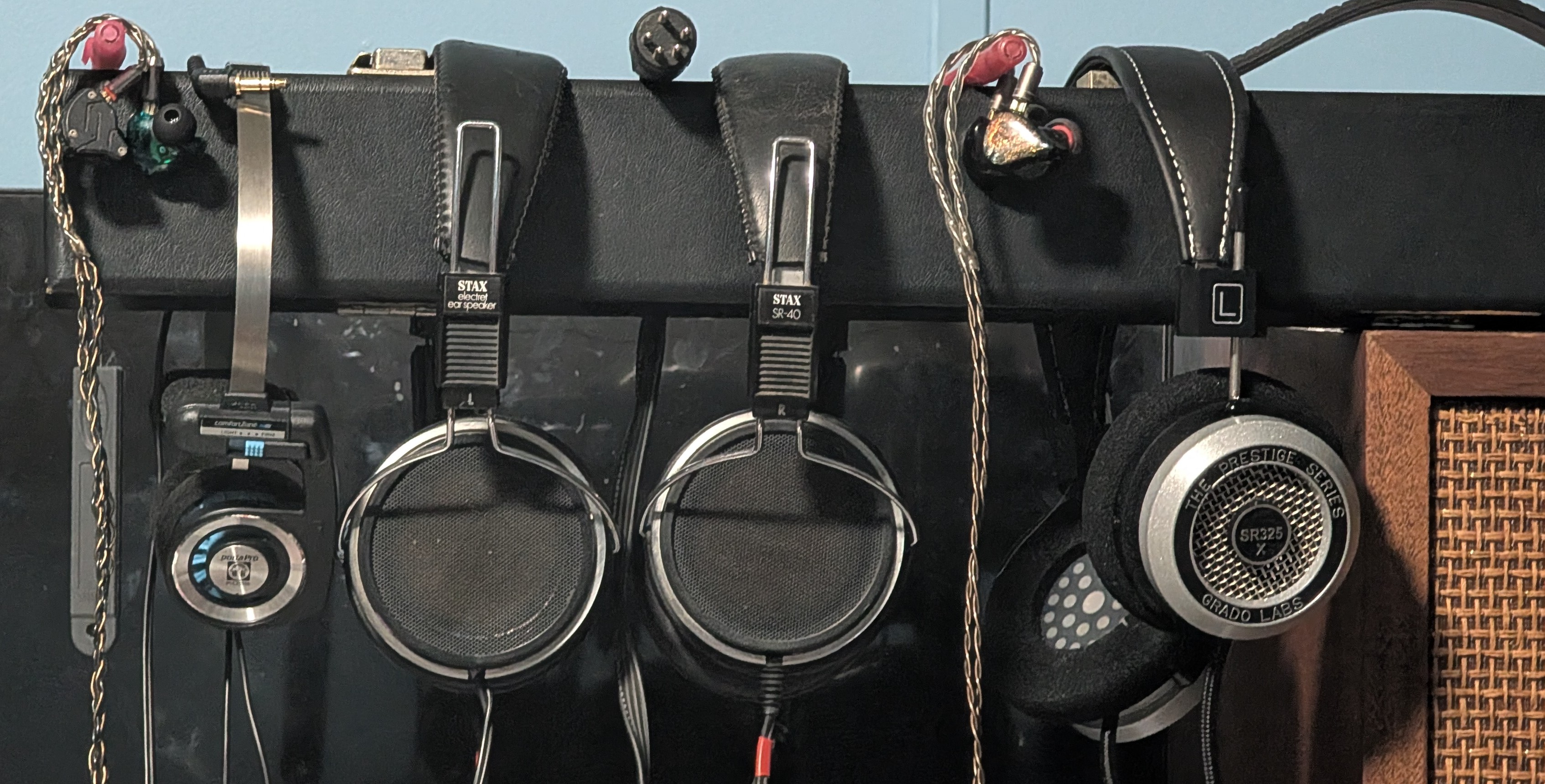
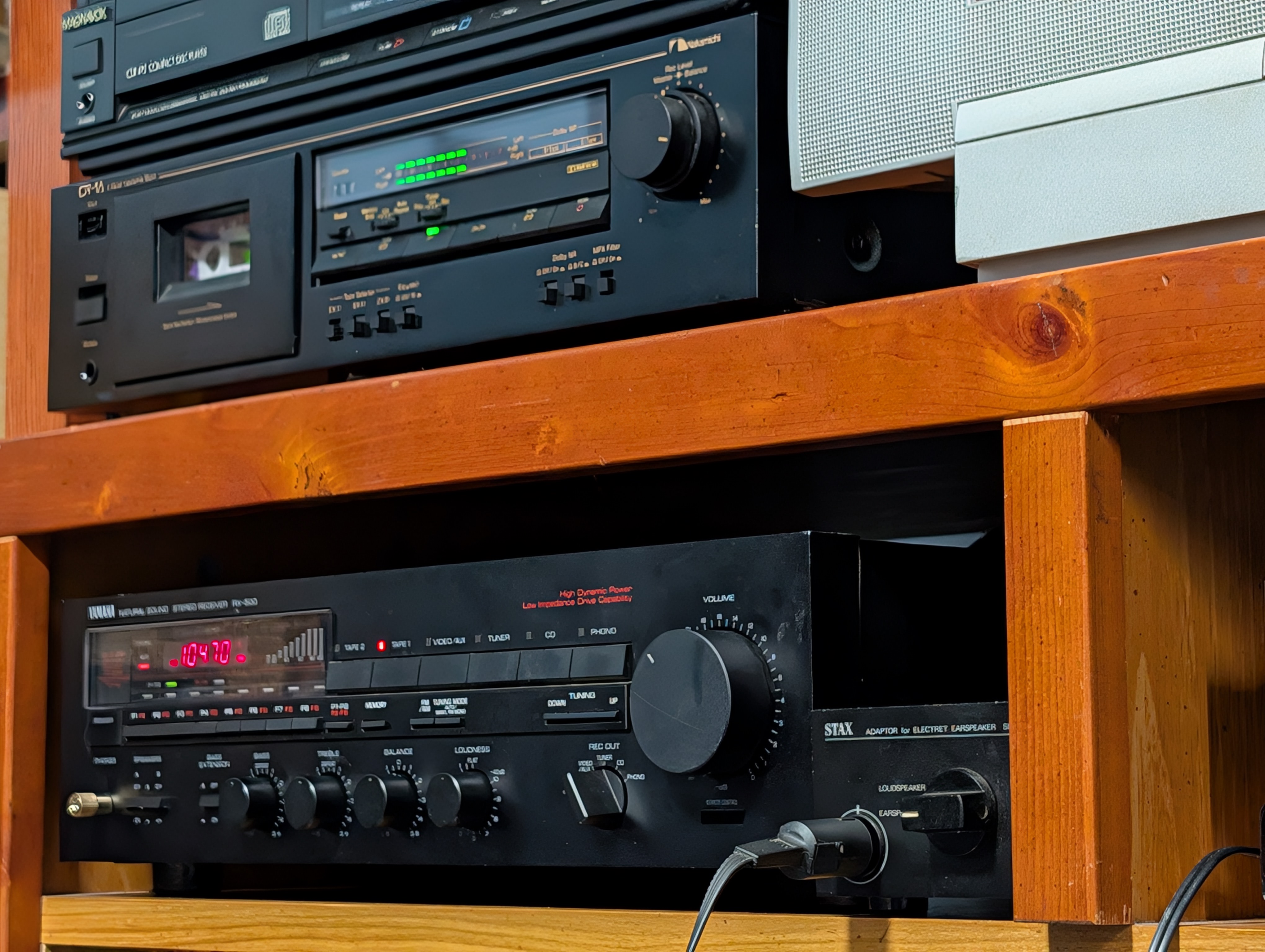
But, I didn't stop there. I wanted a pair of the legendary Stax Lambdas from 1979, widely regarded as one of their best and most imressive models. But, at $500 and requiring a different energizer capable of a 580V bias signal, I knew I was going to have to get some deals. I ended up getting the most basic energizer for only $50, which is way under market value. But while looking for a good deal on the Lambdas, I instead found some Stax SR-X MKii earspeakers. They are a very rare model from 1975 that use 230V of bias and round, 3 micron drivers (opposed to the oval shaped 1 micron drivers of the Lambdas). I got them for $175 missing the earpads, but I had a spare set of SR-40s which had issues, so I peeled off the earpads and transplanted them. Then I put them on and they were exremely quiet. I had to crank my amp past half way just to hear them, which didn't fill me with hope. But, after just 3 songs, I had to turn the volume down as they had reached normal volume, the frequency response filled in, and they just sang. I listened for 6 hours straight just to hear what they could do.
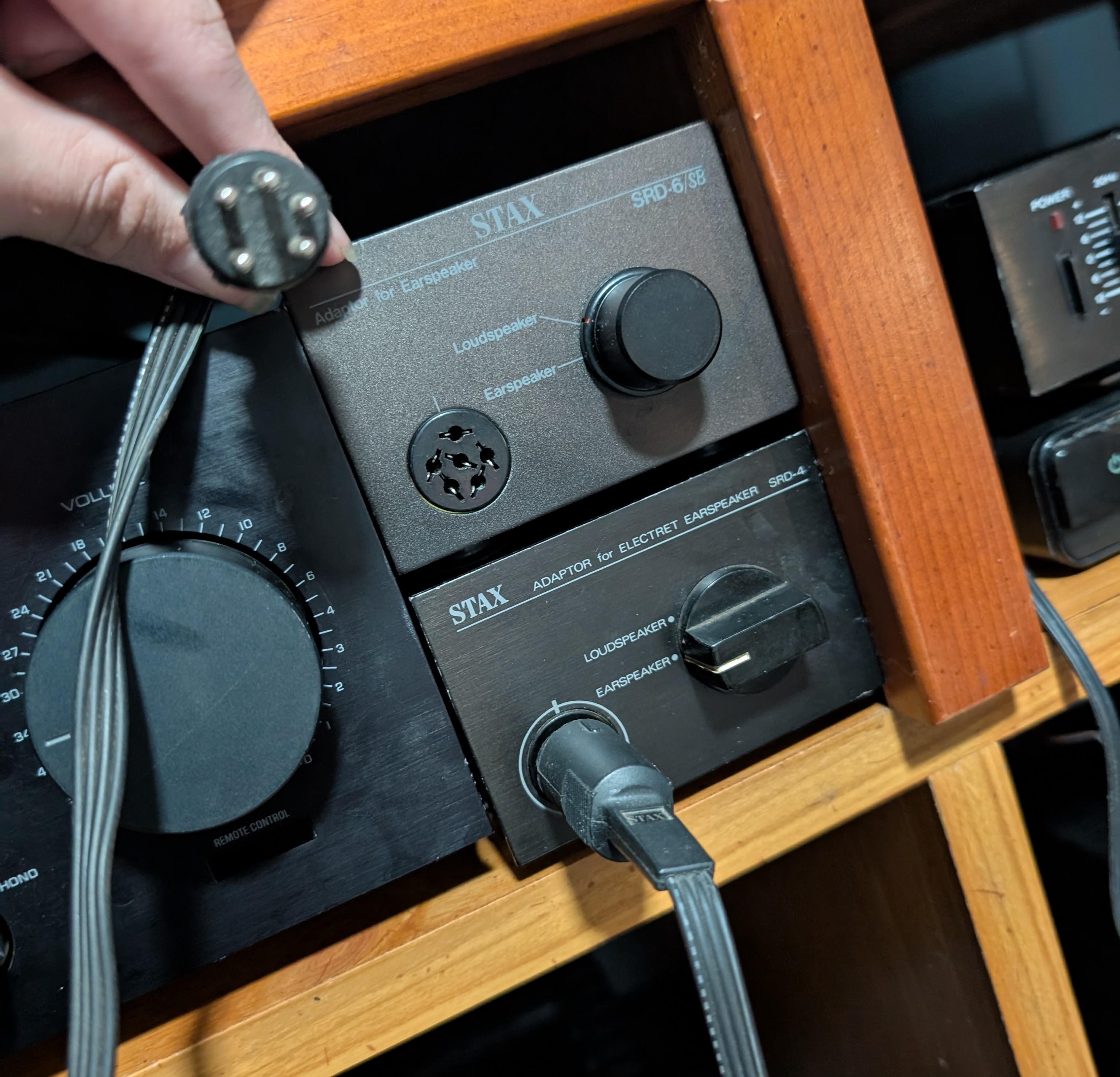
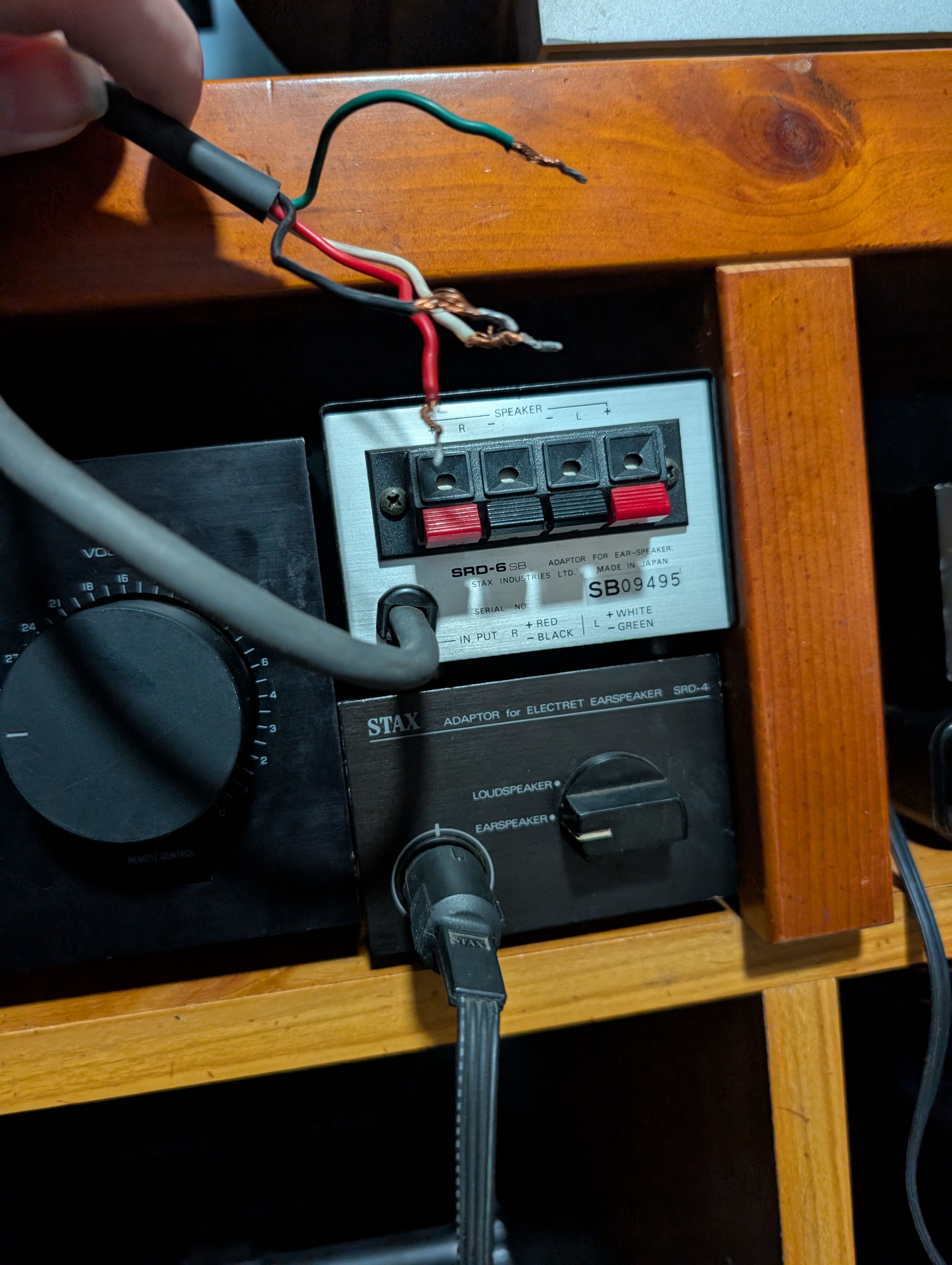
They have the best sound quality I've ever heard, hands down, no exceptions. They blow the Grado SR-325s out of the water, and those are already really impressive headphones. Everything seems well represented, though the bass is maybe a little less represented than what most people are accustomed to. The Yamaha RX-500's bass extenssion button does enough to boost up those frequencies, which the Stax are more than happy to accept without distortion. And even without it, the bass is still incredibly, incredibly detailed in a way unike I have ever heard before. Two albums that really show that are Metallica's black album and Hardcore Syndrome 14. With Metallica, the bass drum hits are incredibly impactful, almost as if they were right there next to you, which you can almost feel in your chest, which made me flinch a couple times. And the bass guitar riffs just sound amazing and have plenty of room to breathe. And the electronic bass in HS14 shows how even though the Stax weren't designed for modern levels of sub bass, they still can clearly and accurately represent those frequencies, with depth and clarity far beyond what I have ever heard before. They just sound incredible and it makes me wonder why there aren't more electrostatics out in the world.
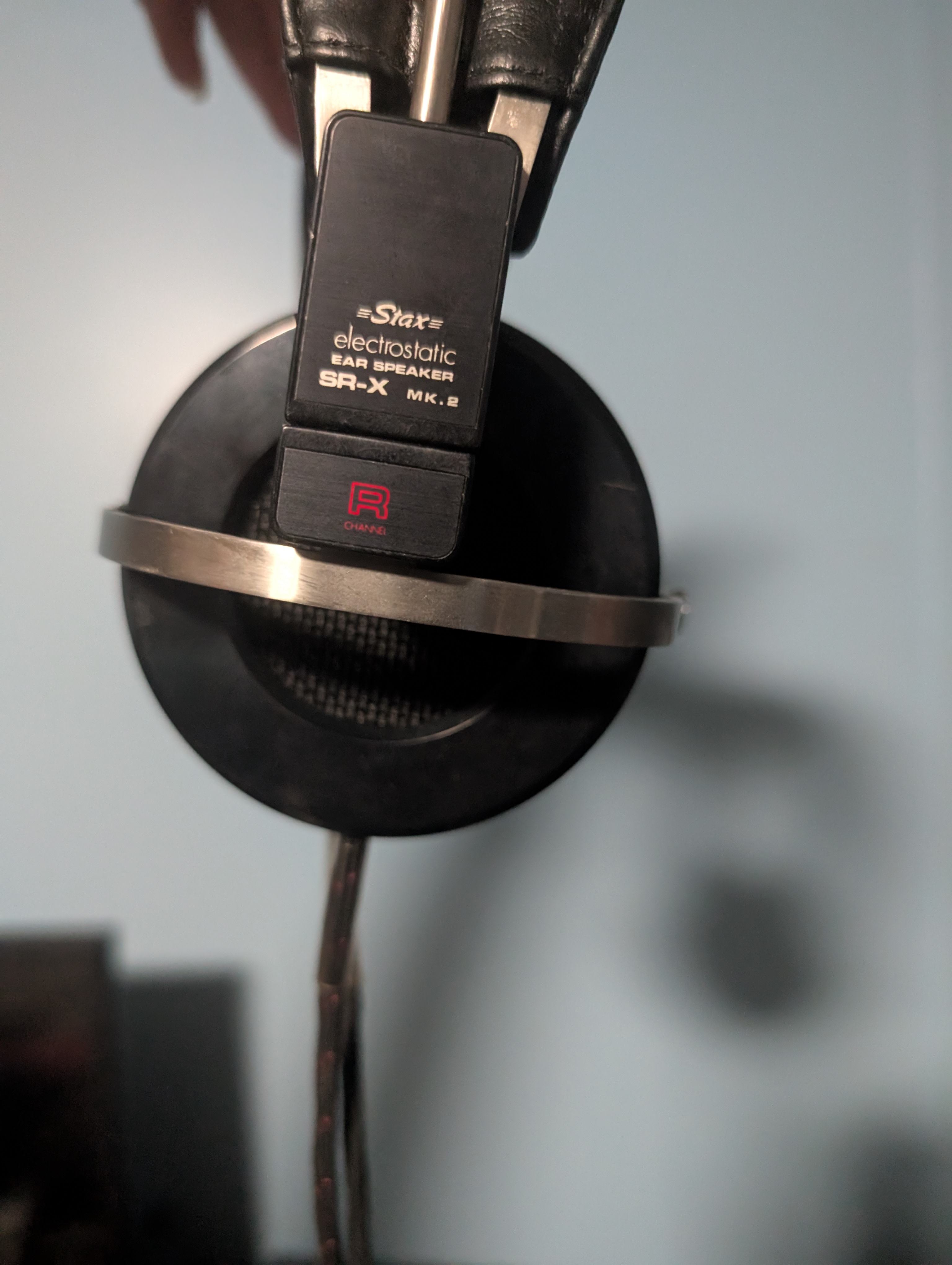
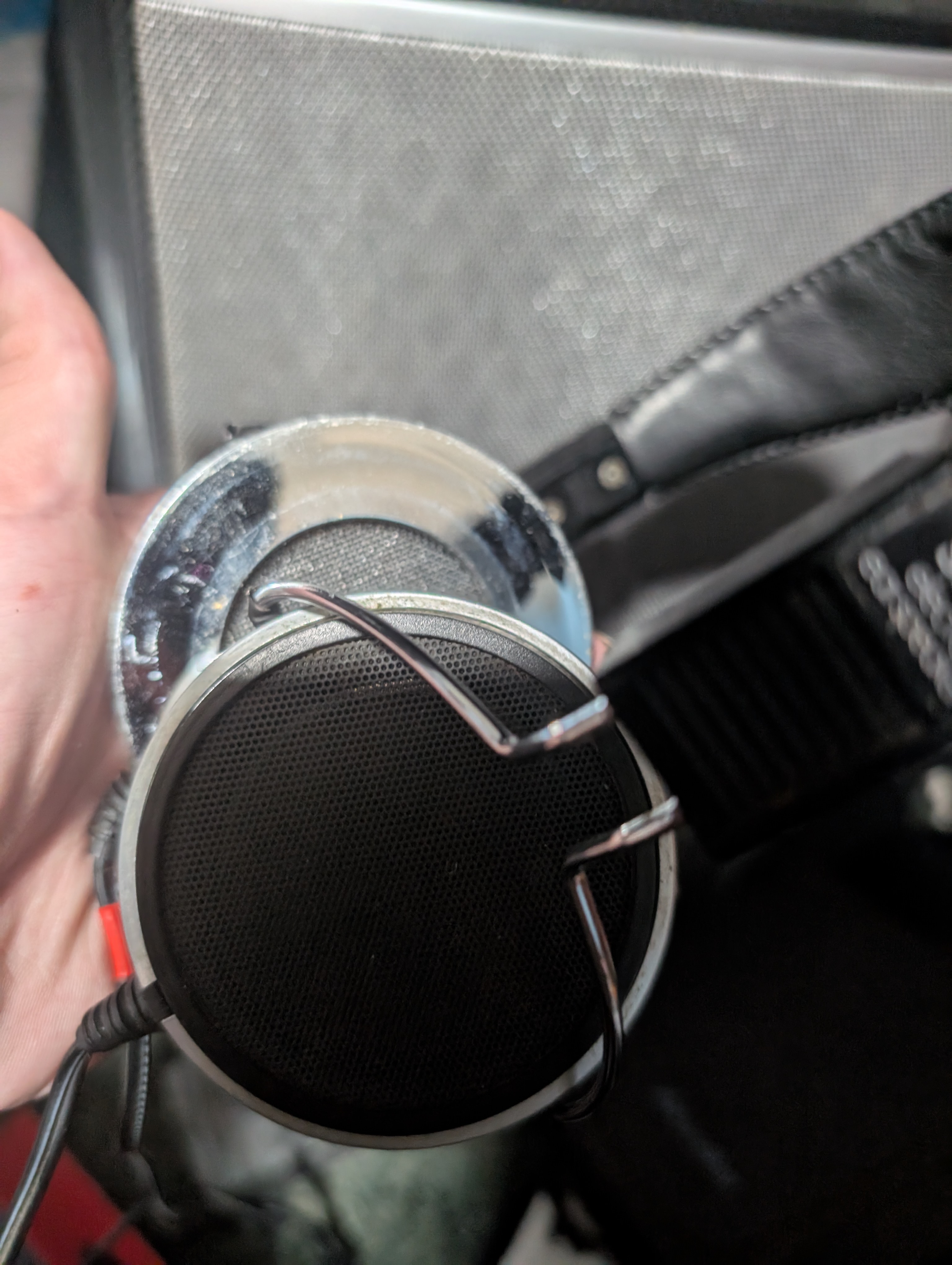
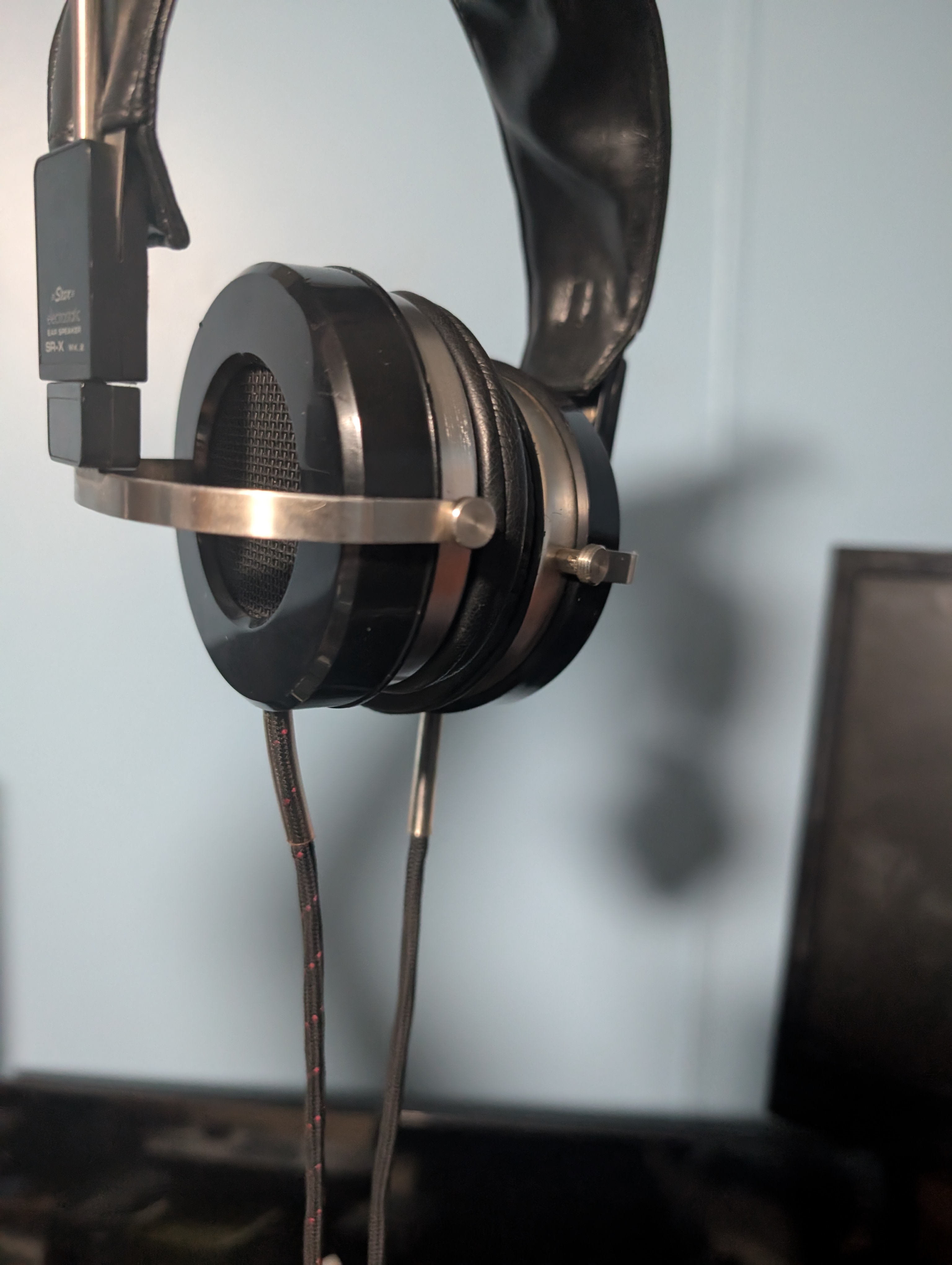
Though, Stax isn't the only name in electrostatics. I happened to stumble on a deal for some Koss ESP9 earspeakers with the energizer, which I haggled down to just over $80. Koss was the company that invented "self energizing electrostatic earspeakers", or what Stax calls Pro Bias, in 1968. The ESP9s were released in 1971 and are a set of closed back headphones, unlike most electrostatics, meaning they have more bass response at the cost of a collapsed soundstage. I am still waiting on these to come in, however, and I will likely need to do some minor repairs. The energizer being incompatible with Stax also means I'd have to chain them off of the back of another energizer to use them in my current setup, which isn't ideal. So, as I wanted to power two sets of electrostatics at once for if I have someone else over (a very rare occasion, but it does happen, usually being my cousin), and wanted a moving coil phono preamp so I could have room for expansion if/when I get a non P-mount turntable, I decided to get a new amp. It's a Proton AM-300 from 1987, which has those abilities, at 30 watts of Class H output, with the all-important balance control for dealing with electrostatics' channel imbalance issues, and was very cheap due to a failed backlight that I gotta solder in a replacement for. Both the Koss ESP9s and the Proton AM-300 should have posts coming soon whevever I get them in, fix them up, and test them out.
All in all, I think the system I've managed to build over the last year is pretty good, and I don't see any improvements I could make without having spent more money or having balanced the budget a little better. I managed to score a lot of gear at lower than market value prices, find and follow a theme of using mid-to-late 1980's gear, with the only main components that aren't still fitting the black with red/white/gold accents, and put together a system that sounds absolutely amazing.
As for a component list for this year:
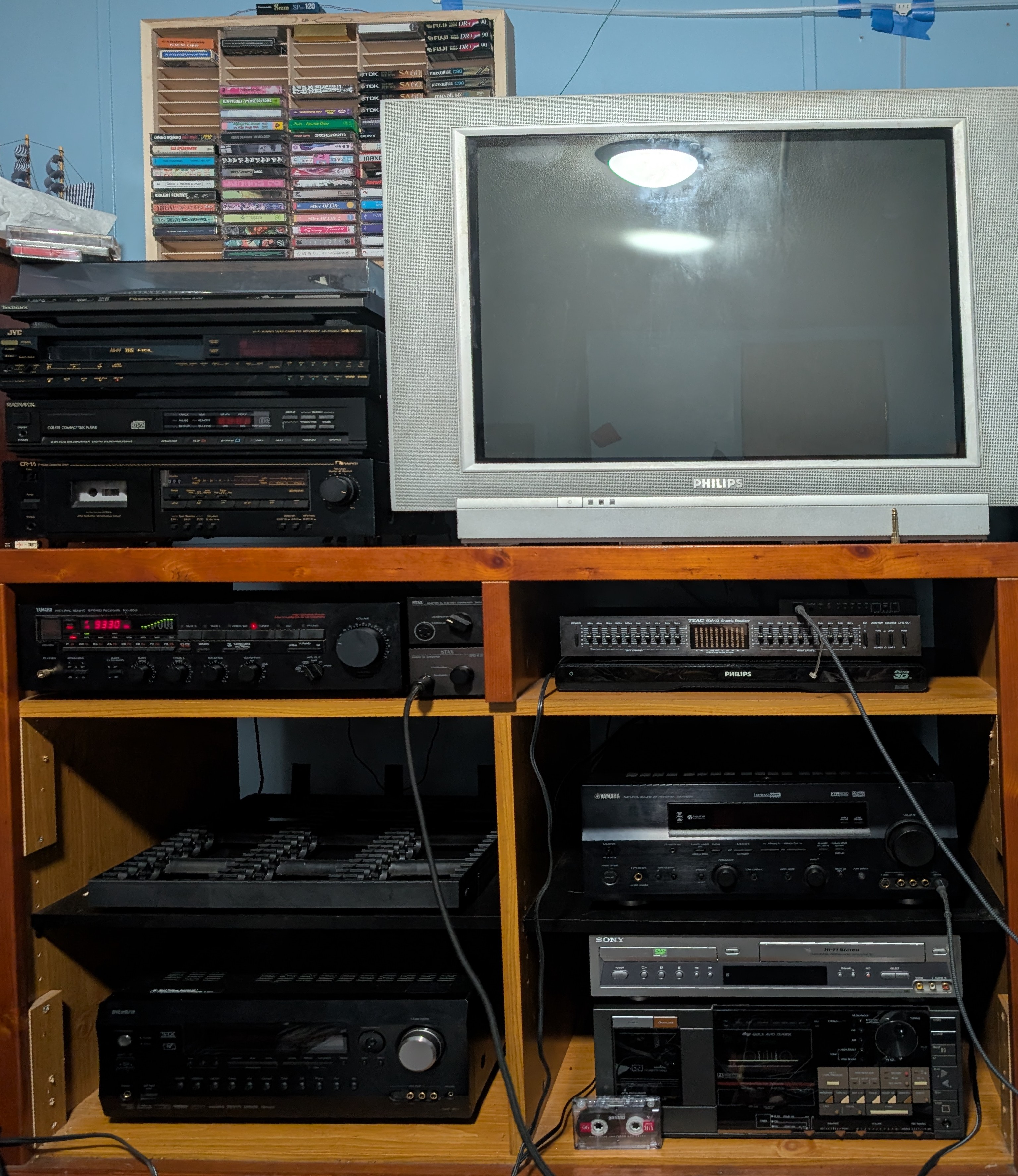
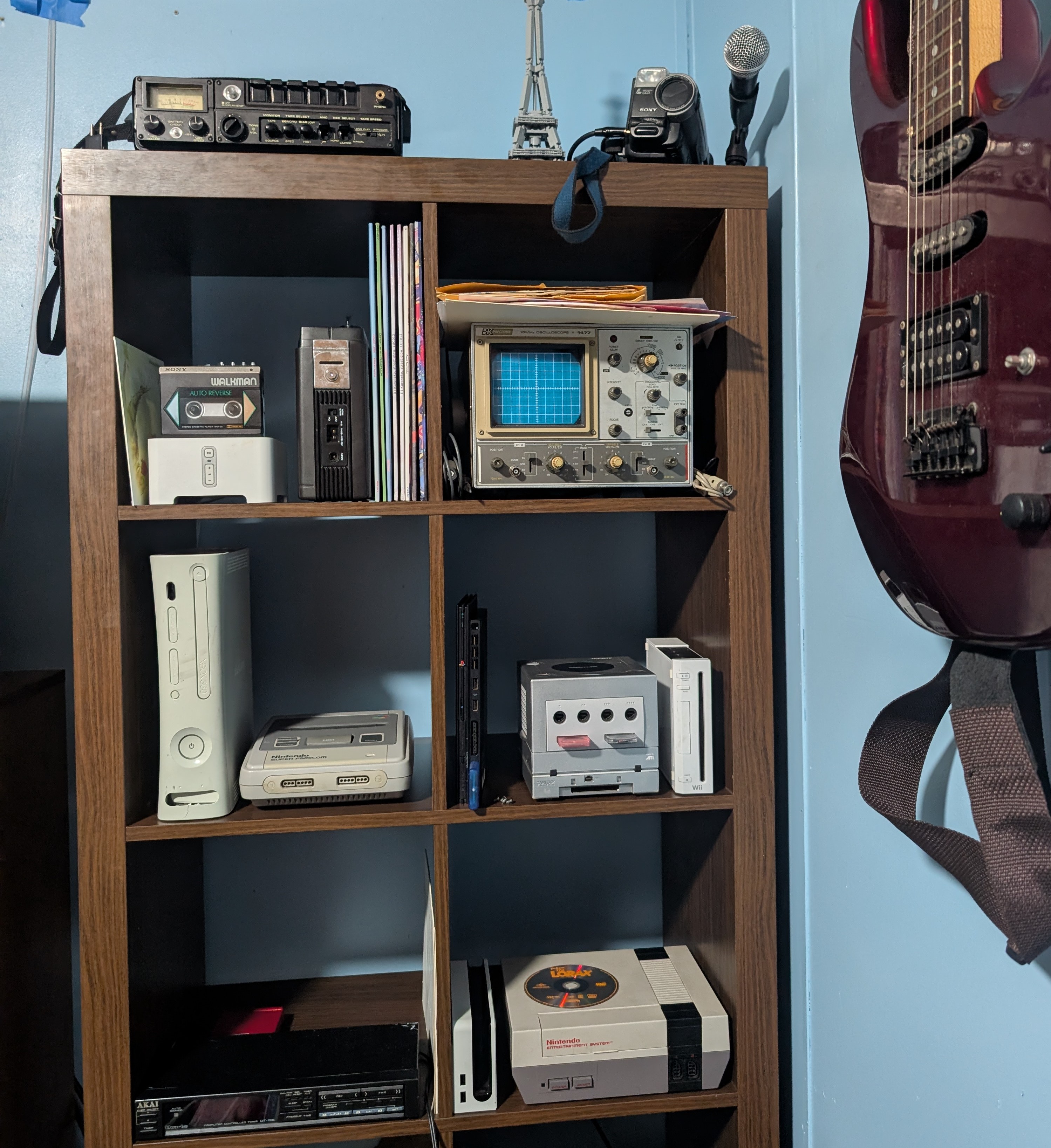
(New updates to this site should come soon, this page may change to add hyperlinks to pages that are created in the future and to follow the new website theme)